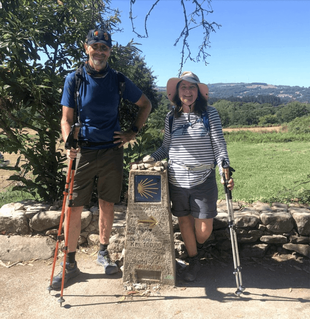PARP Inhibitors

Take a look at what PARP inhibitors are, who they're for and what the side effects might be.
What are PARP inhibitors?
PARP inhibitors are a new class of targeted cancer drug or maintenance treatment, that is becoming more common in ovarian cancer treatment.
They can prevent the spread of cancer by stopping a protein called PARP from performing its usual job of helping damaged cells repair themselves. PARP inhibitors can stop (‘inhibit’) this repair process from happening in damaged ovarian cancer cells, and this causes the cancer cells to weaken and die. This can reduce the chances of the cancer returning or lengthen the time before it does.
There are currently three PARP inhibitors available for ovarian cancer:
- olaparib (Lynparza®)
- niraparib (Zejula®)
- rucaparib (Rubraca®)
The name on the left is what most people call the drug, and the one in brackets is its brand name.
Who are PARP inhibitors for?
PARP inhibitors are available for high grade serous ovarian cancer patients diagnosed at stages 3 or 4, and who have responded well to platinum-based chemotherapy.
At what stage of treatment can I take a PARP inhibitor?
PARP inhibitors are given after a woman has received treatment using platinum chemotherapy that has shown a positive result, with the goal of maintaining the effect of the chemotherapy on the cancer.
PARP inhibitors are now available at first line, meaning straight after you finish your chemotherapy treatment. Which one you may be offered depends on the results of tests done on your tumour and on your own individual health. You may hear your cancer team talking about BRCA and HRD testing in relation to this.
It’s also possible to take PARP inhibitors if your cancer returns (known as a recurrence) so long as you didn’t take a PARP inhibitor at first line. This is known as second line treatment.
If your cancer returns again, this is known as third line treatment.
The options available at each line of treatment are related to your individual circumstances, so speak to your cancer team if you want to know more.
How are PARP inhibitors given?
They are taken as tablets or capsules that you take yourself by mouth at home. You normally start taking them 8-12 weeks after you finish chemotherapy.
“Unlike chemotherapy where you have to go to hospital and be rigged up to have it by IV, Niraparib is tablet form so the onus is very much on me to remember to take it.”
What are the side effects?
The side effects people can have when they start taking PARP inhibitors can worry them, but there will be careful monitoring by your team. For many people the side effects reduce after the first three months.
Side effects do differ depending on which PARP inhibitor you take, but some common side effects include:
-Increased risk of infection
-Anaemia
-Increased bruising/ bleeding
-Nausea/ sickness
-Diarrhoea/ constipation
-Indigestion
-Fatigue
-Headaches
-High blood pressure
You will have regular blood tests to monitor your blood cells, and your kidney and liver function.
It’s important to let your cancer team know of any side effects that you experience. Often there are ways your team can help make you feel better. If there are side effects that aren’t easily improved or they are impacting your quality of life, with some PARP inhibitors it is possible to reduce the dose, without impacting how effective the drug is.
Some of our supporters have told us about their experiences of the side effects of PARPs:
“I have a little bit of nausea and fatigue at the mo, but it’s nothing like when I was on chemo and I am told those symptoms will abate as my body learns to tolerate the treatment.”
“Niraparib: AMAZING! Although I had issues with low platelets initially, once put on the right dose, I have no known side effects.”
“Apart from the first three months on the PARP which was tough (side effects such as really bad nausea/fatigue etc) I live a wonderful, manageable life.”
What do our supporters tell us about PARP inhibitors?

Michelle tells us about her experience with PARP inhibitors
Michelle“In January 2022 my CA125 started to rise and a recurrence was diagnosed. Six cycles of carboplatin sorted that out. At this point I was started on a PARP inhibitor called rucaparib.
This treatment is a comforting safety net to an extent although I’m fully aware it’s not a guaranteed cure.
I’ve tolerated this well until a very low haemoglobin necessitated a blood transfusion and now I take a reduced dose which is suiting me well. Having the rucaparib has been a massive thing.
I’m so grateful for the people who went through the trials that meant these drugs could be manufactured and approved so we can benefit from them”
Anon“For my whole family my diagnosis was painful and upsetting, including all the time taking me to treatment and seeing the side effects. I am now on a PARP inhibitor so have to go to the hospital less and this has really helped reduce the toll on my daughter”
“Niraparib means I can get on with doing things and feeling healthy while at the same time knowing something is suppressing the tumours which feels more proactive than just waiting. I’m able to do things I couldn’t do on chemo- travel, improve my Italian, go to the opera again.”
“So far I've been on Olaparib 20 months. The most amazing 20 months. It brings incredible hope.”
